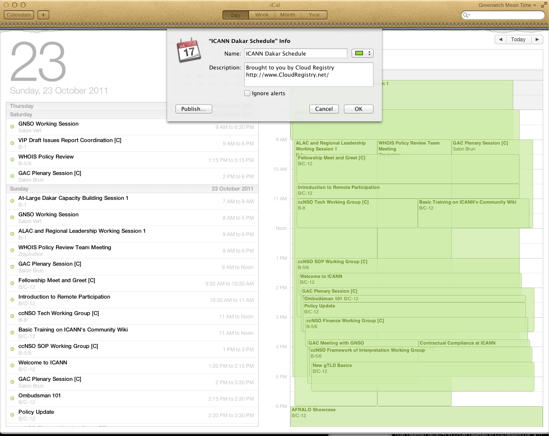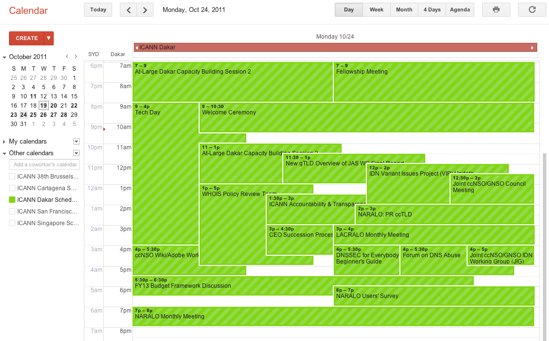Facets of gTLD Registry Technical Operations - Registry Services
At Cloud Registry, we believe in empowering our partners by providing them with intuitive tools, industry knowledge, and insights into the business. It is part of our Flexibility · Visibility · Control value proposition. That’s why we make it a point that information sharing and education are a large part of our consultation with clients. Encouraged by the positive feedback we have received from clients — seasoned industry players and newcomers to the industry alike — we would like to share our experience with the wider ICANN community with this series of blog posts.
Registry Services
In this instalment, we will explore the core functions of a registry. Being the registry operator for a TLD means offering services in conjunction with the TLD. While the registry can offer a variety of services, ICANN provides guidance on what constitute registry services:
A. those services that are both:
- operations of the registry critical to the following tasks: the receipt of data from registrars concerning registrations of domain names and name servers; provision to registrars of status information relating to the zone servers for the TLD; dissemination of TLD zone files; operation of the registry zone servers; and dissemination of contact and other information concerning domain name server registrations in the TLD as required by the Registry Agreement; and
- provided by the Registry Operator as of the Effective Date of the Registry Agreement, as the case may be;
B. other products or services that the Registry Operator is required to provide because of the establishment of a Consensus Policy (as defined above);
C. any other products or services that only a registry operator is capable of providing, by reason of its designation as the registry operator;
D. and material changes to any Registry Service within the scope of (A), (B) or (C) above. (Definition comes from .NET Agreement, as specified by the ICANN Board on 8 November 2005, http://www.icann.org/minutes/resolutions-08nov05.htm).
The guidebook cites some customary services:
- Receipt of data from registrars concerning registration of domain names and name servers.
- Dissemination of TLD zone files.
- Dissemination of contact or other information concerning domain name registrations (Whois service).
- Internationalized Domain Names, where offered.
- DNS Security Extensions (DNSSEC).
which roughly translates to EPP, DNS, Whois, IDN and DNSSEC — the core well-known services.
Mapping it out
It helps to think about the registry in two parts: provisioning and publication.
| Provisioning | Publication | |
|---|---|---|
| Customary Service Categories | 1, 4, 5 | 2, 3 |
| Services |
EPP Policies IDN rules DNSSEC signing |
DNS Whois Zone File Access Bulk Registration Data Access |
Or, thinking in terms of an Input/output paradigm, the “Provisioning” subsystem, as we call it at Cloud Registry, encompasses the “input” and “processing” part of the equation; the “Publication” subsystem correponds to the “output” of a registry.
Why Should Applicants Care?
While all TLDs essentially perform the same core functions of accepting registrations and publishing info onto the DNS and Whois, etc., this is one of the main areas in which a gTLD applicant can distinguish itself from the competition.
Registry services are mostly covered by Question 23 of the Applicant Guidebook. Being a non-scoring question, applicants may defer to their technical operator to provide a boilerplate response. While likely to be safe, this will lead to a very unimaginative registry.
At the other end of the spectrum, applicants should be mindful of the Registry Services Review and not trigger an extended evaluation by RSTEP, which will incur additional costs and delay to the application approval process.
What about Critical Registry Functions?
Some have expressed confusion between registry services and the “five critical functions of a registry” stated in the guidebook: DNS, SRS, Whois, data escrow, DNSSEC. It’s important to note that critical registry functions is a tangential topic that is mostly related to continuity and registrant protection in the event of a potential continuity threat.
Examples of Other Registry Services
Following are some examples of registry services beyond the basics:
- name reservation and correponding release / allocation plan
- registry lock service
- grace periods
- registrant verification or nexus requirements
- enhanced rights protection mechanisms
- any non-standard form of access to registry data offered to other parties such as law enforcements
The registry services offered by a TLD is a defining attribute, and should be one of the key strategies for any would-be applicant.







 Subscribe to RSS
Subscribe to RSS